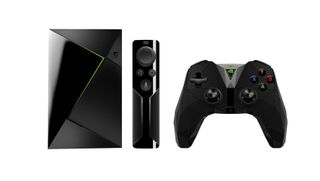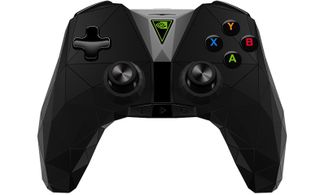Nvidia Software Upgrade 5.0 Brings 4K HDR, Android Nougat To Previous Generation Shield TV (Updated)

Updated, 1/27/2017, 5:33am CT: A change was made to clarify the GPU used in the new Shield TV.
Nvidia released its Shield TV Software Upgrade 5.0 for the previous version of the company’s streaming device, which updates the OS to Android 7.0 (Nougat) and adds 4K HDR capabilities to the old model.
The company announced the new Shield TV (and its intent to get previous-version owners in on the new features) back at CES, where Nvidia revealed its aspirations to make the Shield TV an integral part of your Smart Home, offer more premium games, and upgrade the Android OS.
The new Shield TV features a smaller chassis than the previous version (Shield TV 2015), but it has the same Maxwell-based GPU under the hood as the previous iteration. However, it comes with a newly-designed controller that enables features including completely hands-free Google Assistant, which will also soon connect to Smart devices via an upcoming SmartThings Hub technology integration.
The new controller is a must-have for this feature, and owners of the previous version can simply purchase a new one to get in on the action. Additionally, Nvidia’s Spot AI mic accessory will be hitting the market later this year, which will further extend AI control throughout the home using the Shield TV’s SmartThings Hub.

GeForce Now, Nvidia’s game streaming service, was also updated and will soon feature a slew of Ubisoft games, including Watch Dogs 2, Assassin’s Creed Syndicate, For Honor and more. The change from a monthly service to a set hourly rate and the ability to stream to low-powered PC and Mac devices doesn’t kick in until sometime this March, and the GeForce Now update feels more like a prelude of what’s to come.
The new Shield TV and controller are available now from retailers such as Newegg and Best Buy for $200 and $60, respectively. You can also preorder the Shield TV Pro (with a 500GB hard drive) for $300, and it will arrive on January 30. However, we’ll have to wait a little longer for the Spot mic and games.
Stay on the Cutting Edge
Join the experts who read Tom's Hardware for the inside track on enthusiast PC tech news — and have for over 25 years. We'll send breaking news and in-depth reviews of CPUs, GPUs, AI, maker hardware and more straight to your inbox.
-
Jose Luis_3 I think it is exactly the same Tegra x1 like the old version, Maxwell based, not Pascal.Reply -
atomicWAR Shield 2017 Is wholly underwhelming bit of kit. Before it's launch I was hoping for a pascal based setup an was thinking of purchasing one. I already own the hand held and tablet versions. I was very disappointed Nvidia went with the X1. Won't be picking up one now.Reply -
atomicWAR Reply19215740 said:I think it is exactly the same Tegra x1 like the old version, Maxwell based, not Pascal.
It is they just have it wrong in this article for what ever reason. Such a crappy move on Nvidia's part but if I had to guess they didn't want to undercut the Nintendo Switch. The X1 is still one of the best performing SOCs in the market for GPUs so I think Nvidia thought they could get away with it. It's a super disappointing move. I was hoping for Parker and 6GB or Ram. Guess I'll just keep hooking up my shield tablet via HDMI until Nvidia releases a true upgrade. -
Mithos I think Nintendo Switch GPU is X1, maybe they have a deal, to not compete, for a period of time.Reply -
gggplaya They should make the game service like sega game channel was back in the 90's. Essentially the netflix of games with rolling library changes as time goes on. But it should be a monthly fee, parents won't do hourly.Reply -
Cinnagar I'm pretty sure the monthly service will still be available for Shield TV and the Shield K1 Tablet. My understanding was that the hourly rate is only to stream to Mac or PC...Reply -
wifiburger obviously this product line from Nvidia along with their garbage low power soc is a big fails and will never take offReply
for streaming Tegra SOC that adds cost is not needed, as for low power soc like Tegra fails big time as a gaming platform
a more succeseful product would be something along the line of 960 or 980 at 5watts that enables gaming and as a bonus you get streaming etc.... just an example
Most Popular



